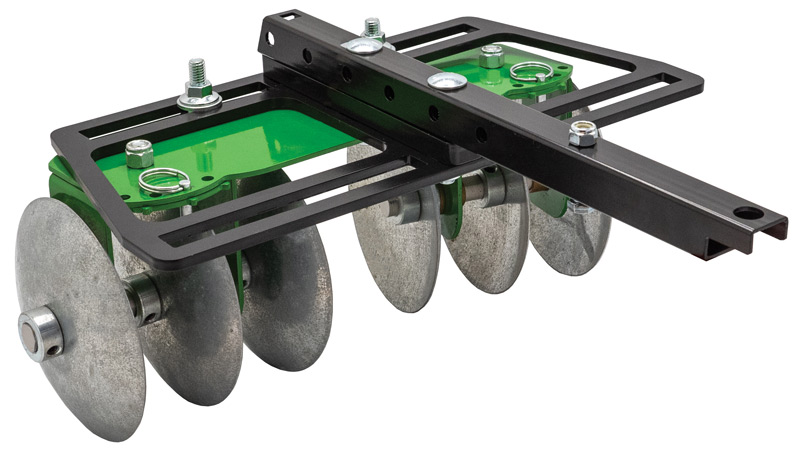I have a little over 3 miles of trenches I need to close up. All were done with a 6" wide trencher and vary from 12" to 30" deep. They are mains, sub-mains, and laterals for a pecan orchard irrigation system. My dirt is an alluvial silt loam, with a decent clay component. If I catch it at right moisture level, it should behave decently for this based on pushing it around with other blades.
The only thing I have that might be suitable for this task is turning a landscape rake to an angle, but I suspect I'd be making multiple passes and I'd have to dodge sprinkler heads. I'm thinking I can weld something up in half a day and hopefully save a lot of time with something more purpose built. We've only planted 2/5ths of what we're going to plant, so this will get further use.
My general idea follows the below picture of tile trench closer, but much more crude. I'm dealing with loose dirt from the trencher, so I don't need to be as robust or fancy. The largest channel our steel place in town had was 10", which will probably do the job fine. I'm going to make a V with a 5' opening on the front that closes to about 8" in the back. This is where soil moisture content and trial and error will come into play. I don't know if an 8" opening will clog up, but my thought is to start off small and then cut more out of the shoot if necessary.
Anyone have practical knowledge with doing this?
1st pic is of commercially available tile trench closer.
2nd pic are my trenches


The only thing I have that might be suitable for this task is turning a landscape rake to an angle, but I suspect I'd be making multiple passes and I'd have to dodge sprinkler heads. I'm thinking I can weld something up in half a day and hopefully save a lot of time with something more purpose built. We've only planted 2/5ths of what we're going to plant, so this will get further use.
My general idea follows the below picture of tile trench closer, but much more crude. I'm dealing with loose dirt from the trencher, so I don't need to be as robust or fancy. The largest channel our steel place in town had was 10", which will probably do the job fine. I'm going to make a V with a 5' opening on the front that closes to about 8" in the back. This is where soil moisture content and trial and error will come into play. I don't know if an 8" opening will clog up, but my thought is to start off small and then cut more out of the shoot if necessary.
Anyone have practical knowledge with doing this?
1st pic is of commercially available tile trench closer.
2nd pic are my trenches


